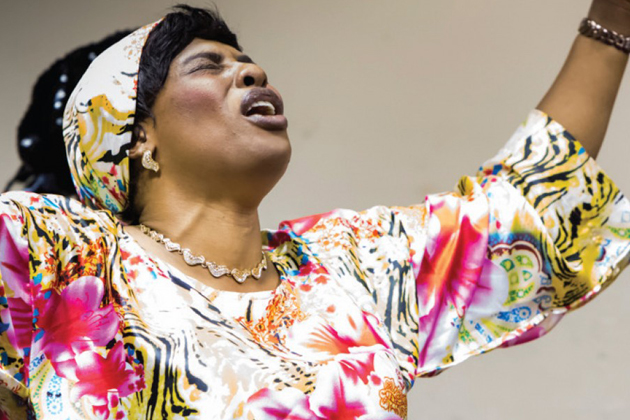The Sacred Space exhibition is concerned with the contemporary making and unmaking of sacred space in Dublin. Through showcasing the work of communities, architects, photographers and academics, the exhibition and it’s accompanying publication celebrate the diversity and potential for inter-culturalism of cities in general – and of Dublin in particular.
Dublin City Council and City Architects Division helped with some of the funding for the project.
Ali Grehan, Dublin City Architect, was invited to write the introduction to the Sacred Space publication. Here is the text:
The Inclusive City
Ireland has become an increasingly diverse society over the last decade and the transition has been dramatic and rapid. Remarkably, the question ‘what is your nationality’ was introduced in the census as recently as 2002 with a significant number of people replying that it was other than Irish. Today, Ireland is no longer a monochrome country but home to people from two hundred nations. Dublin has seen the greatest change, repopulated and given a cosmopolitan heart that befits a nation’s capital and a city of the world.
Diversity is an advantage, inclusion is an asset. Is this view universally shared? Fundamentally, do we see diversity as a threat, a nuisance or an opportunity? Does how we seek to include people of other cultures inform what we do with our urban environment? What kind of urban environment do we need to create and how? The Sacred Space publication and accompanying exhibition provoke a number of thoughts about inclusivity in society – its meaning, value and achievability.
Phil Wood, principal advisor to the Council of Europe on its ambitious ‘Intercultural Cities’ programme of which Dublin is a member, describes increasing degrees of inclusion of ethnic groups and migrants; from the one-dimensional ‘Guest Worker City’, where immigration is viewed solely as an economic transaction; to the ‘Assimilation City’, where acceptance is conditional on identity being submerged beneath the prevailing culture; to the ‘Multicultural City where diversity is welcome, legally and culturally, but where separation is maintained between ethnic groups; to the most progressive ideal, the ‘Intercultural City’, a vibrant place of multiple identities and interactions, where understanding and empathy is encouraged and people allowed to grow and express themselves.
By and large, Dublin is considered to be an inclusive city, ‘multicultural’ certainly and on the cusp of being truly ‘intercultural’. However, the tolerance and ease by which this has been achieved over a short time cannot be taken for granted. Inclusion and multiplicity of expression has be nurtured and celebrated. What is most inspirational about the Sacred Spaces book and exhibition – particularly Eugene Langan’s photographs – is how redundant, forgotten, unexpected or underappreciated places can be reinvented and elevated through different people thinking about them differently. This is the diversity advantage.
We are exploring this premise as part of PIVOT Dublin’s recently initiated design project, Hidden Rooms, which set out sixteen critical urban issues under social, cultural, economic and environmental themes. Pilot projects to address these issues will be tried by Dublin City Council and partners in 2015. The issue of social inclusion is set within the context of the north inner city. The area suffers from high levels of deprivation and neglect but has also become the most culturally diverse and potentially one of the most attractive parts of Dublin. People from many ethnic communities who have been attracted to the area because it is affordable have injected a new energy and vitality. We’ll test how to harness this social and cultural diversity to drive economic prosperity, growth and inclusion for everyone who lives there, elevating it from an area of deprivation to a living expression of 21st century Ireland and a bridge to the world.
2015 is the European Year for Development. The Sacred Space exhibition is a timely contribution to the general discussion throughout Europe, while rooted in the particular experience of people in Dublin; making homes, seeking work, raising families and finding the sacred here.
Ali Grehan
Dublin City Architect
Sacred Space exhibition is running until May 1st 2015 at darc space gallery.

